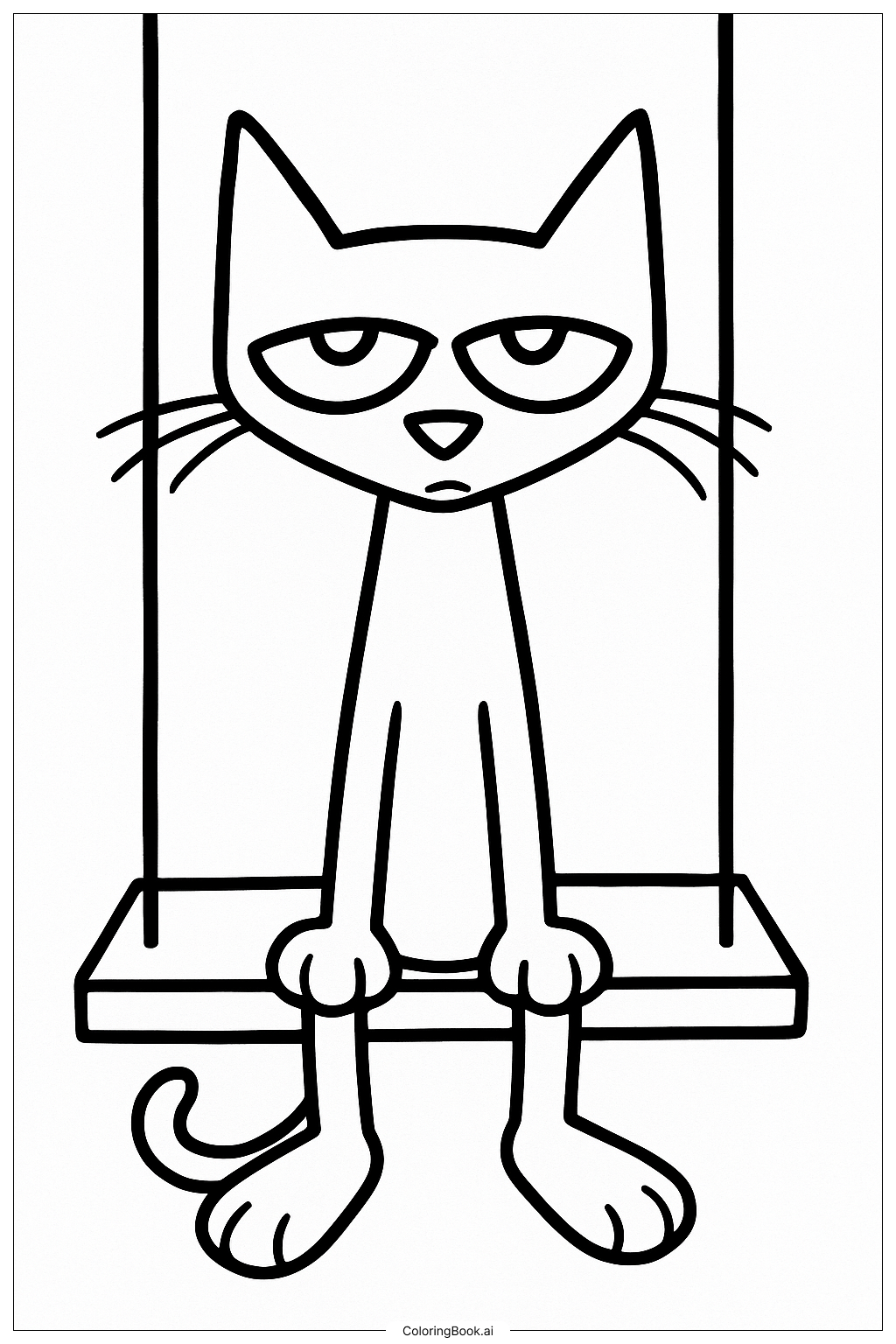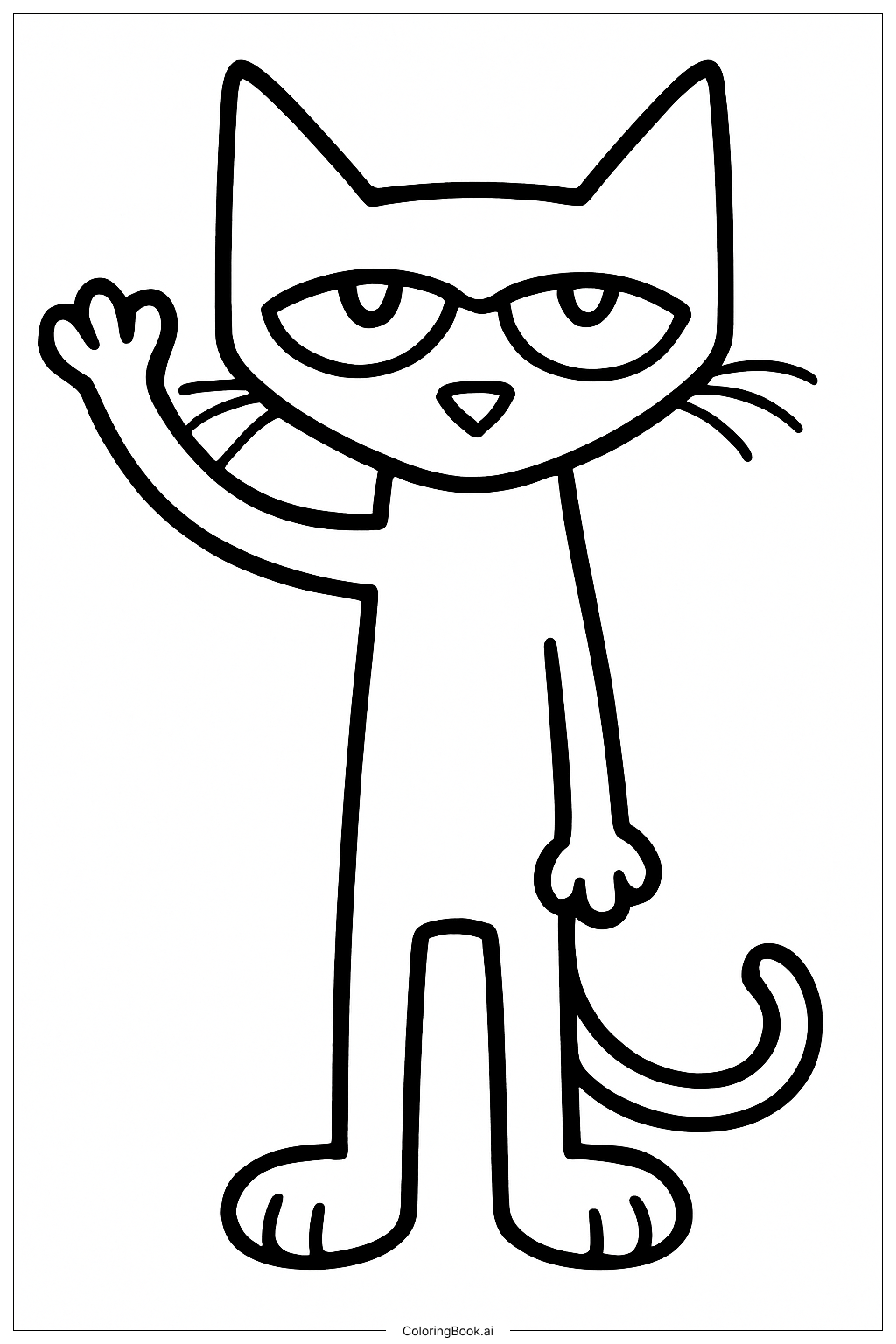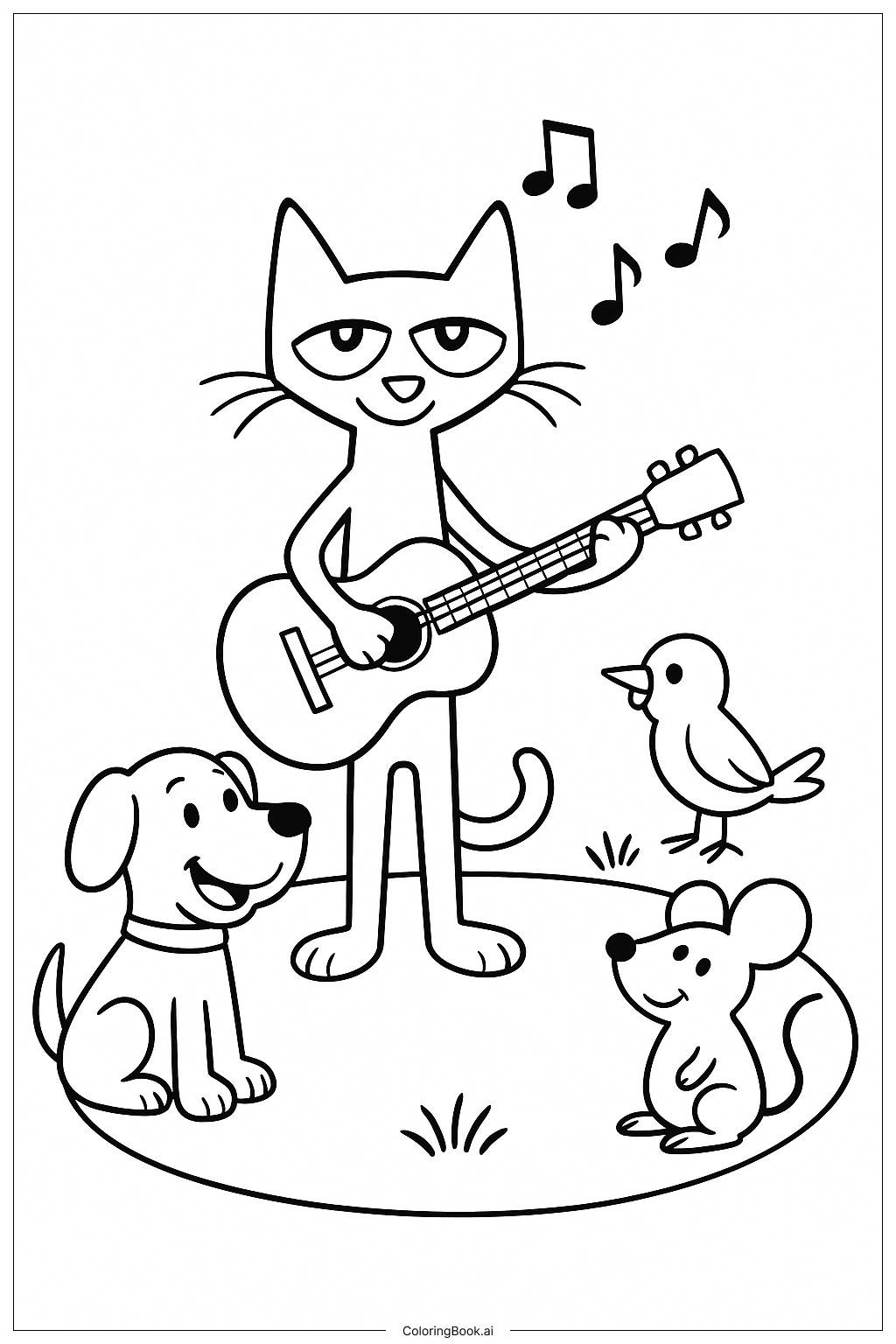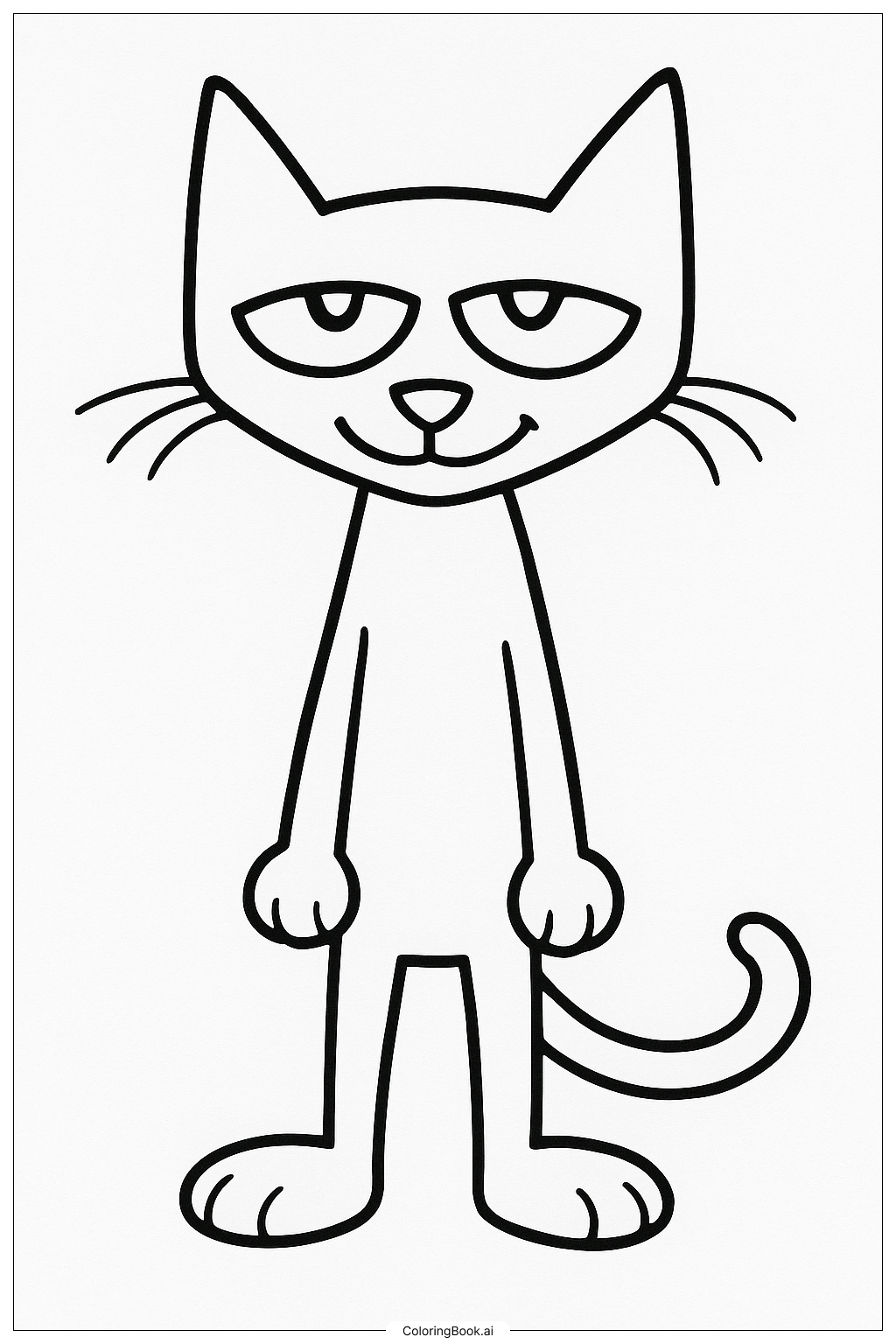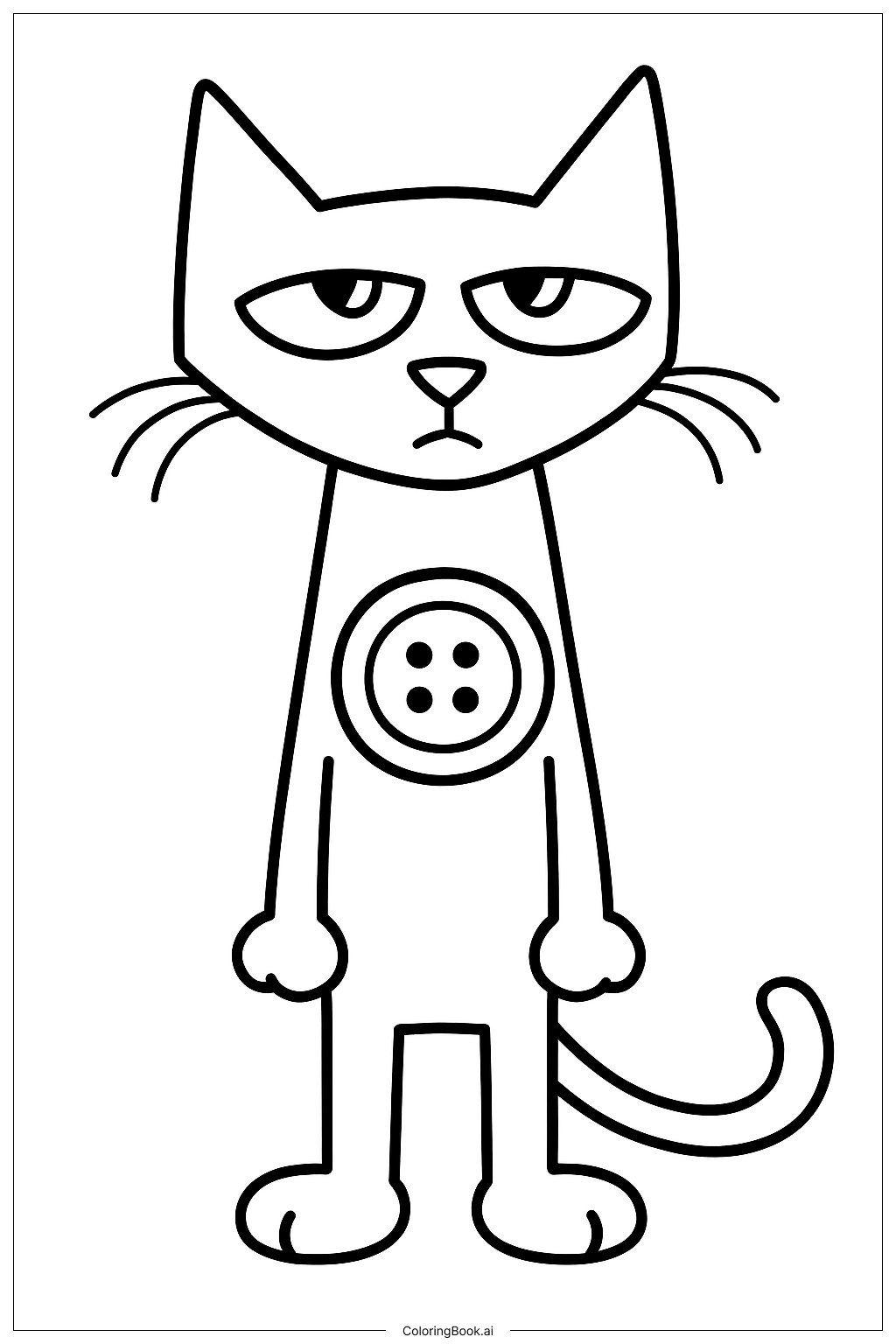Coloring tips: How to color Pete The Cat Sitting On A Swing coloring page well?
For coloring this picture, you can start with Pete the Cat’s body. Traditionally, Pete is blue, so you might want to use different shades of blue to bring him to life. You can color his nose and the inside of his ears pink or light peach. The swing seat can be brown or tan to look like wood. The ropes can be gray or black. For the background, you can get creative by adding green grass, blue sky, or even colorful flowers around. Don’t forget to color Pete’s eyes to make them stand out. Try using bright colors for a lively and cheerful look, or soft colors for a calm and relaxing scene.
Coloring challenges: Which parts are difficult to color and need attention for Pete The Cat Sitting On A Swing coloring page?
1. Color within the lines: Pete’s paws, tail, and ears are small and need careful coloring to stay inside the lines.
2. Symmetry: Making sure Pete’s eyes and paws look even can be tricky, as small differences can change how he looks.
3. Long, thin lines: The ropes holding the swing are narrow and straight, so coloring them evenly without going outside can be hard.
4. Large empty areas: Pete’s body and the swing seat have big spaces that require even coloring to avoid patchy spots.
5. Facial details: Pete’s nose, eyes, and mouth are smaller details that need gentle coloring to keep them clear and distinct.
Benefits of coloring books: Advantages of drawing Pete The Cat Sitting On A Swing coloring page
Coloring Pete the Cat on the swing helps improve fine motor skills by encouraging careful hand movements. It also boosts attention to detail because you need to color within the small spaces and lines. The picture allows children to make creative choices with colors, which supports imagination and color recognition. Additionally, finishing the picture gives a sense of achievement and can be very relaxing, reducing stress and increasing focus.
